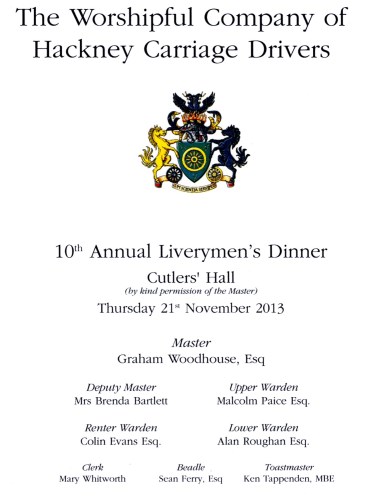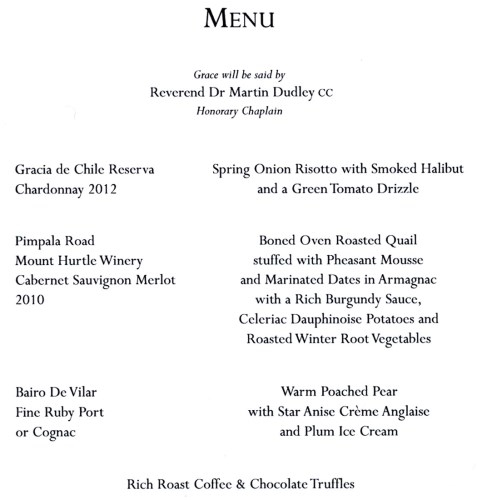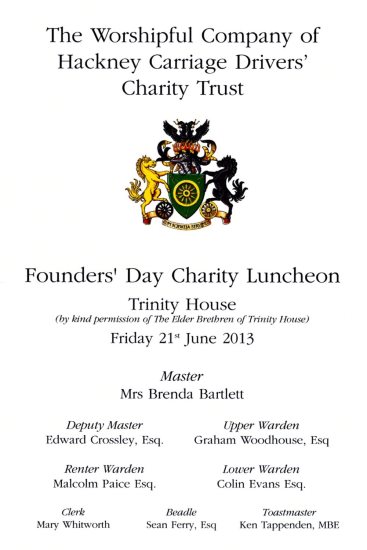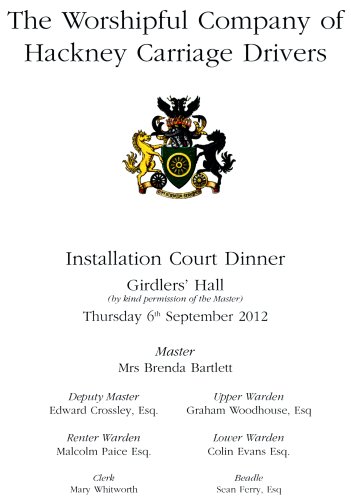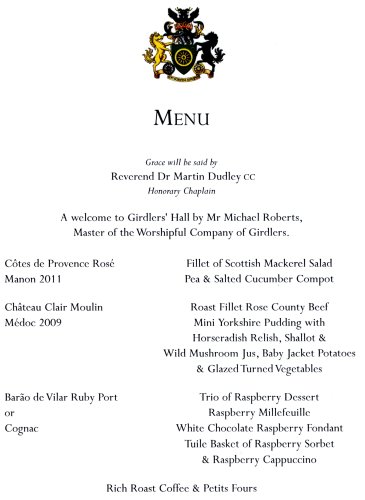
Tel: 020 7620 1818 email: cookandbutler@btconnect.com
The Worshipful Company of Hackney Carriage Drivers
www.hackneycarriagedriverscompany.com
Spring Dinner
17th March 2025, Trinity House, London

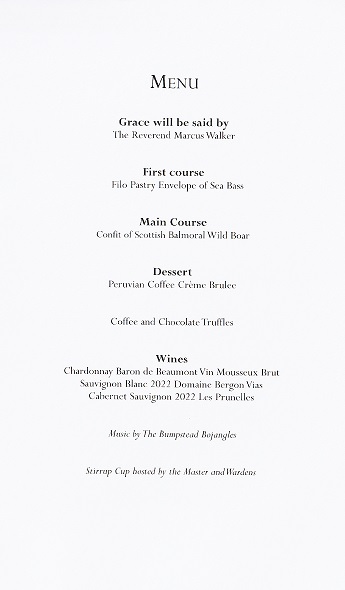
20Th Annual Liverymen's Dinner
16th November 2023, Watermen's Hall, London


Election Court Dinner
September 2019, Cutlers' Hall, London
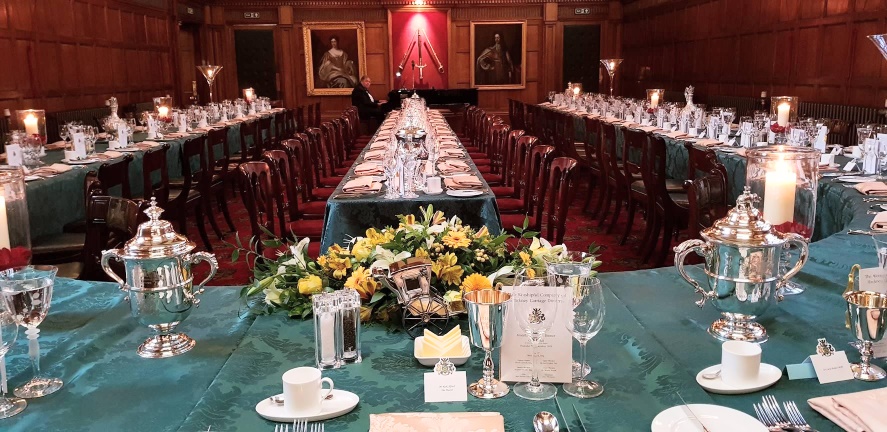

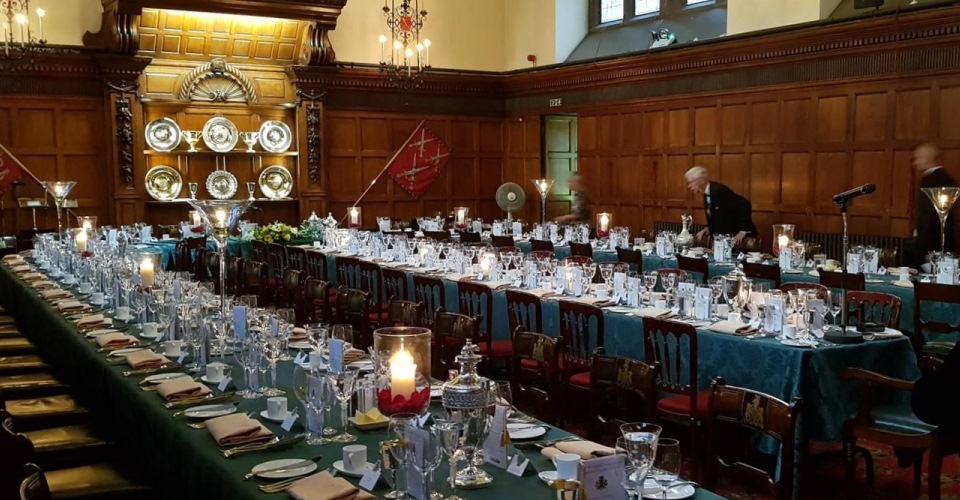
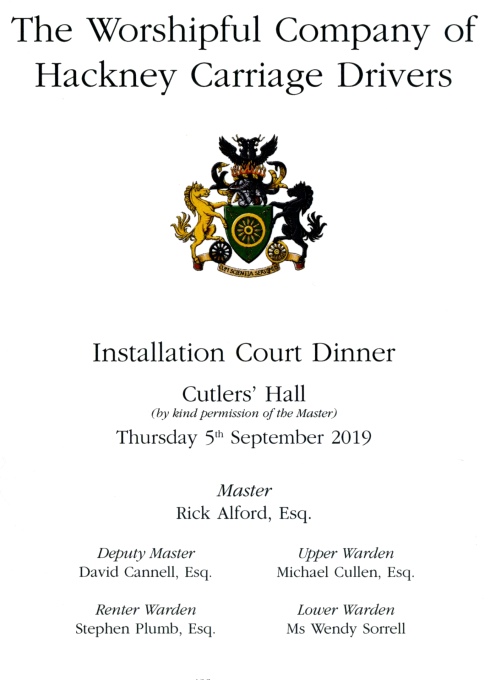


Annual Liverymen's Dinner
November 2016, Cutlers' Hall, London

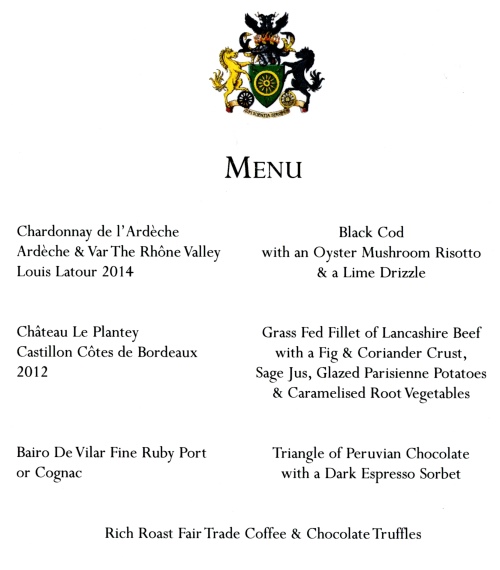

Election Court Luncheon
May 2016, Wax Chandlers' Hall, City of London
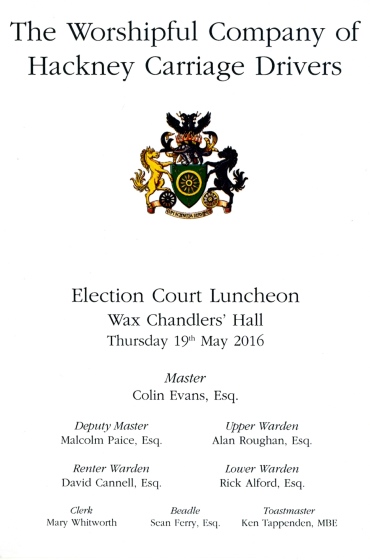
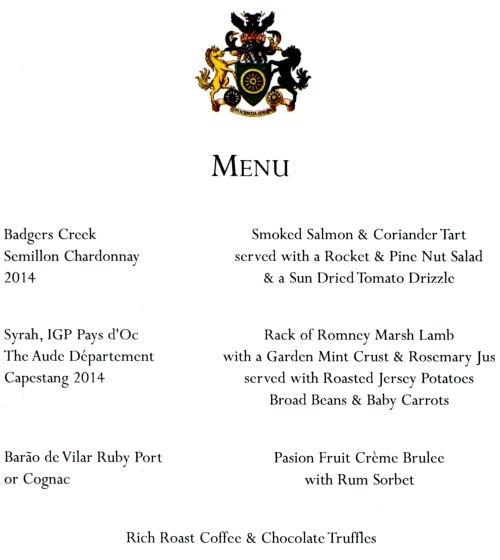
The Worshipful Company of Wax Chandlers
The Wax Chandlers Company originated in a 'fraternity', an
association of tradesmen and craftsmen formed for mutual support and
spiritual benefit. Beeswax was very important to fraternities, whose
observances required the consumption of such quantities of tapers, torches
and candles that subscriptions and fines for misdemeanours were often
payable in the commodity. Beeswax candles, the luxury article compared with
tallow (obtained by rendering animal fats and considerably cheaper than
beeswax), were used extensively by the church, court and nobility.
The rise of the Wax Chandlers Company corresponded with the proliferation of
trade and parish fraternities in London, and the increasingly elaborate
religious ceremonials of the late C14 and C15, 'Proper and seemly funerals'
called for enormous tapers and churches and altars were lit all day every
day and ornamented with numerous wax images.
In early days tradesmen were known as cirgers (French ecclesiastical candle
— cierge) and the label 'Wax Chandler' did not come into use until the
1330's. Sometimes they were simply described as chandlers, although this was
more usually applied to tallow chandlers. The original business of a Wax
Chandler included different forms of lighting such as torches and tapers;
embalming and the preparations for funerals; wax images and mould-making,
and wax for document seals and wax writing tablets. The Wax Chandlers were
also a minor medical guild.

11th Annual Liverymen's Dinner
November 2014, Cutlers' Hall, London
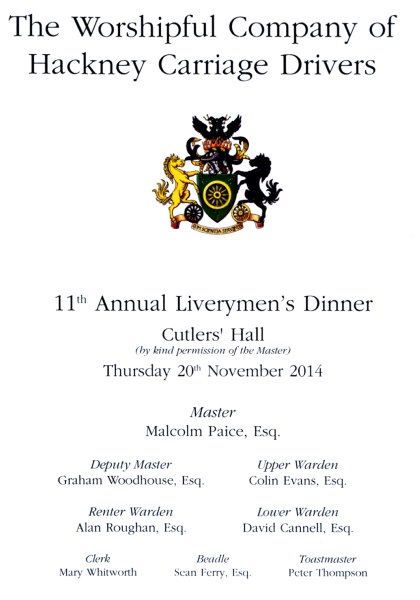


Founders' Day Charity Luncheon
June 2014, Stationers' Hall, London
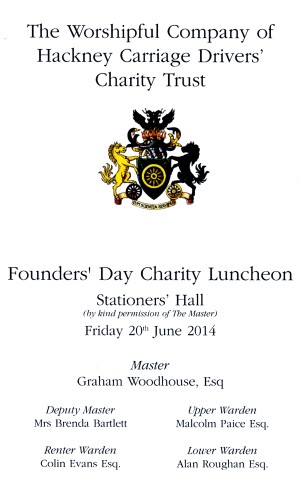
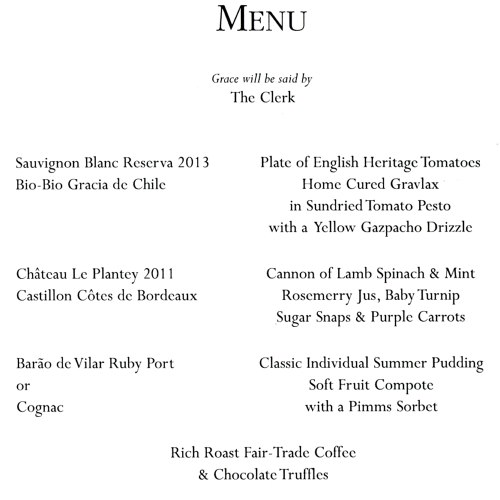
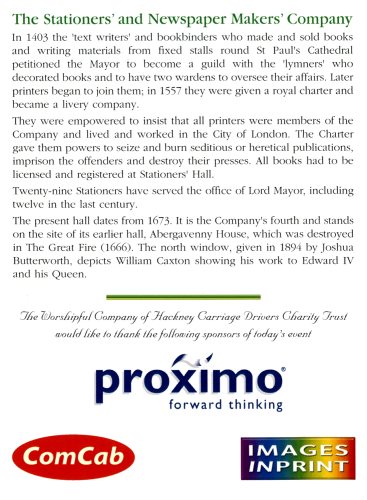
The Stationers' and Newspaper Makers' Company
In 1403 the 'text writers' and bookbinders who made and
sold books and writing materials from fixed stalls round St Paul's Cathedral
petitioned the Mayor to become a guild with the 'lymners' who decorated
books and to have two wardens to oversee their affairs. Later printers began
to join them, in 1567 they were given a royal charter and became a livery
company.
They were empowered to insist that all printers were members of the Company
and lived and worked in the City of London. The Charter gave them powers to
seize anti l>urn seditious or heretical publications, imprison the offenders
and destroy their presses. All books had to be licensed and registered at
Stationers' Hall.
Twenty-nine Stationers have served the office of Lord Mayor, including
twelve in the last century. The present hall dates from 1673. It is the
Company's fourth and stands on the site of its earlier hall, Abergavenny
House, which was destroyed in The Great Fire (1666) The north window, given
in 1894 by Joshua Butterworth, depicts William Caxton showing his work to
Edward IV and his Queen.
